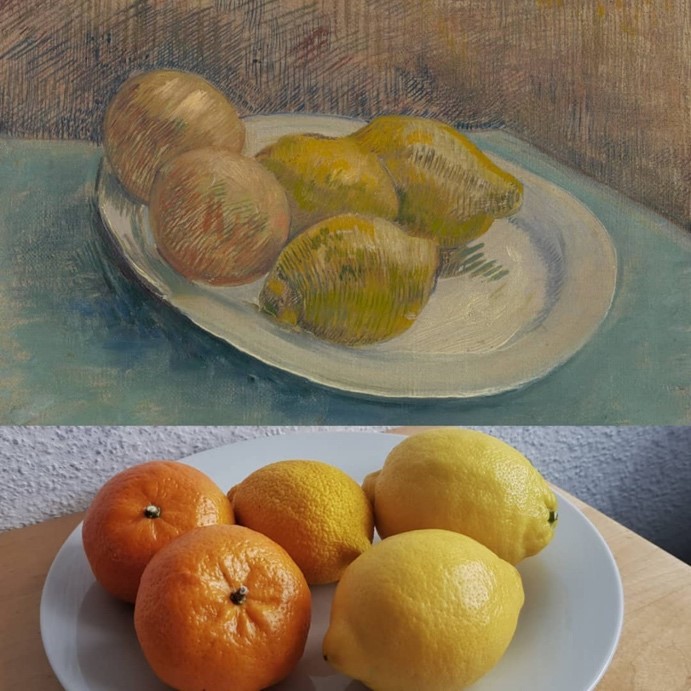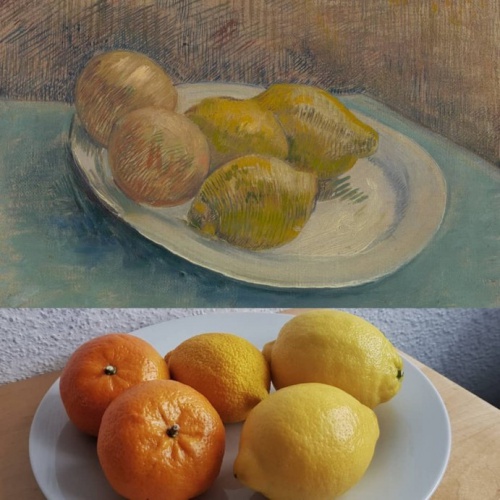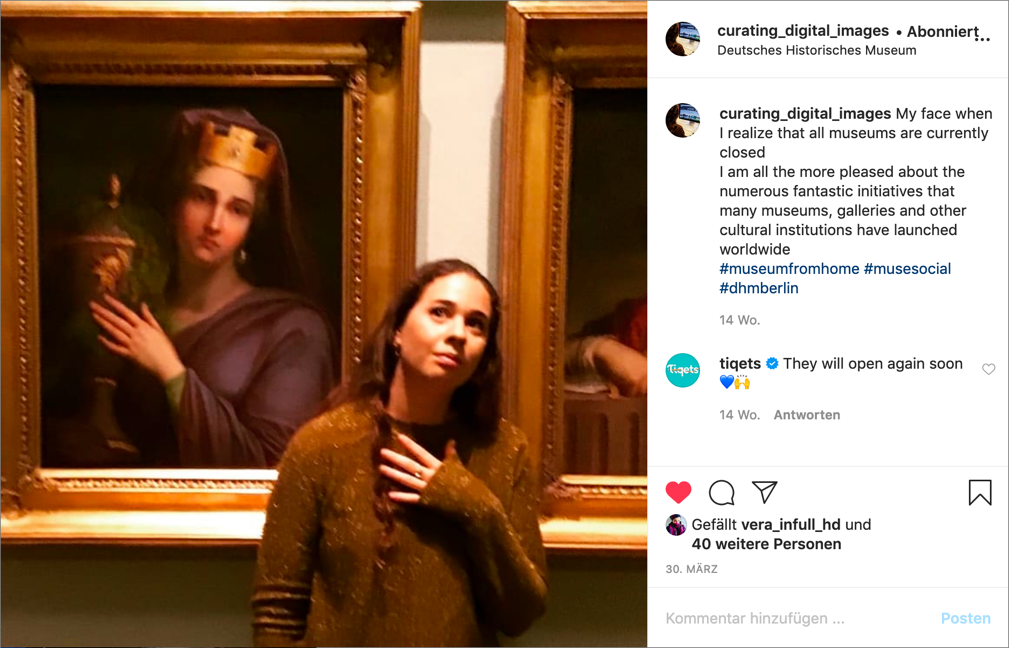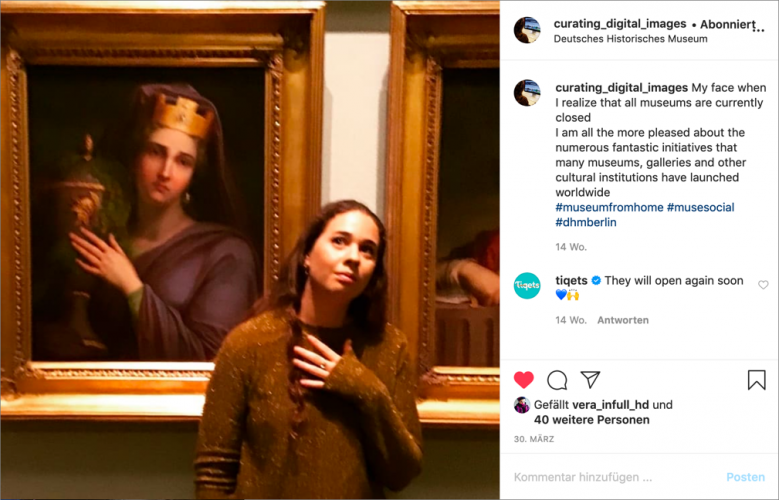In mid-March of 2020 the German government decided to temporarily close cultural institutions such as museums and theatres in an attempt to contain the spread of the Coronavirus. By this point in time, countries all over the world had already done the same or would soon follow. This meant that the cultural sector had to find other ways to stay in contact with their visitors. For a large number of museums this encompassed the expansion of their digital services, many of which had been largely neglected or even non-existent. This raises the questions about how effective those efforts are on a long-term basis and how visitors react to and interact with them. The research project ‘Curating Digital Images: Ethnographic Perspectives on the Affordances of Digital Images in Heritage and Museum Contexts’, located within the DFG priority programme ‘Das Digitale Bild / The Digital Image’, combines two related ethnographic studies that take a look at how practices of digital image curation transform museum and heritage experiences. This entails the way in which visitors transform and create digital images in these contexts. In relation to Covid-19 the project can help in trying to understand what happens when visitors cannot go to the physical museum but are instead directed towards virtual spaces and how they interact with them. In the following we want to present a few examples of how complex this process of ‘turning to the digital’ is.
Virtual Museum Experiences
When looking for digital museum content online today, one will sooner or later stumble over countless articles of different newspapers and web-magazines that list museums that can be visited online. Most of the links, however, promote museums that can be visited virtually, for example by ‘walking’ through a digitized 3D-space. These lists can be found all over the internet; on sites like Facebook, Twitter, Tumblr or Reddit, to just name a few. These links then get disseminated and shared through different channels by friends and family, for example by forwarding links or by tagging someone in photos or comment sections. Even though most of the virtual museums advertised there were established years ago, they are often perceived as new and enthusiastically welcomed by social media users. On Facebook one can observe how friends are tagging each other in the comment sections of posts, with some users planning dates in the virtual museums, and others suggesting field trips to fellow parents and teachers for remote teaching. On Tumblr users are expressing their emotions within the hashtag-system: ‘#COOL!!!’, ‘#now this is fun’, ‘#AAAAHHHH YESSY YES’ or ‘#oh yeehaw’ are just a few of the hashtags that were used to show appreciation for digital museum content. Next to these rather emotional expressions, the posts are also often tagged as ‘#inspiration’ or ‘#resource’ and show that the content is also intended to be used in or to inspire creative projects. The desire for museum experiences during lockdown has been conveyed through such reactions and interactions. However, a study by Michael Alexis, Director of Marketing of Museum Hack, shows that the enthusiasm and the active search for virtual museum experiences were short-lived. In mid-March, at the beginning of lockdowns and contact-regulations in most countries, Google-searches for ‘free virtual museum tours’ and ‘online museum tours’ increased rapidly, only to slowly decline again shortly thereafter.
Even though public awareness of such online museum offers was raised during this time one can assume that it is a fleeting trend. One reason for this could be that virtually walkable rooms or mere click-through presentations of object images, things that were mostly advertised in the aforementioned lists that circulated the internet, cannot bind their audiences for long periods of time. Interaction and the possibility to correlate with what can be seen on the screen is not possible in the same way as it is in physical spaces. Differences in infrastructure between digital and physical spaces manifest in different practices, which means that linear transfers of the physical into the digital cannot work long-term. Museums must understand that the internet offers opportunities to engage with their audiences, or to provide content for the audience to interact with – in other ways than it is possible in the physical space. They must appreciate and work with the technical idiosyncrasies of the internet. Some museum content, as it can for example be found on social media, adapts to the internet’s own dynamics and the practices that result from it to create more engaging content.
Interactive Museum Initiatives on Social Media
The lists and articles as well as their contents offer a great insight into the content museums put online for their visitors to explore. However, they are mostly very passive in nature. Digital museum content that actively seeks to involve their visitors becomes more interesting for internet-users who are used to creating and interacting with things that they find on the internet. In times of Covid-19, many museums used social media accounts to do just that, as it can be established relatively quickly and also with limited resources, so that hashtags aimed at interaction with visitors have become a popular tool for museums on different platforms. Haidy Geismar describes hashtags as recursive ‘in that they reflect user-generated categories at the same time as bringing those categories into being for users to connect to’.1 It is not surprising, then, that hashtags in particular, are used by museums to stay in contact with their visitors during times of Corona-related restrictions. Next to hashtags that are primarily used by museums, there are also examples of hashtags that allow for interaction between museums and their visitors.
There is for example the hashtag #MuseumFromHome, which originally invited museum staff to record 60-second videos telling a story about their favourite artefact, but has since expanded and is used for all kinds of digital museum initiatives. Using the #MuseumMomentOfZen hashtag, museums and art lovers shared calming images of museums and museum artworks. The York Castle Museum lets their followers on Twitter discuss and laugh about quirky and bizarre objects from their collection. The most popular initiative, however, invites its visitors to interact with online collections and inspires them become creative: Tussen Kunst En Quarantaine (Dutch for ‘Between Art and Quarantine’) is a project that started independently from any museum and rapidly generated a lot of attention and participants. Users are challenged to recreate artworks using three props that can be found in their homes. The challenge gained a lot of popularity and many followers: on Instagram alone there are over 61.400 posts tagged with #tussenkunstenquarantaine, the English-language equivalent #betweenartandquarantine about 43.800 [as of June 2020]. It all started with the Instagram-account TussenKunstEnQuarantine which, according to interviews, was shared across Dutch Social Media and thus gained many followers in a short period of time.
When the Rijksmuseum took notice of the challenge, it also called for its visitors to participate in this ‘Stay At Home Challenge’: ‘1. Choose your favourite painting. 2. Find three things lying around your house. 3. Recreate the painting with those attributes’. This social media post spread the idea even further, turning what started as a Dutch idea into an international challenge, inspiring more museums to call upon their visitors to participate, such as The Getty Museum with the hashtag #GettyMuseumChallenge. Ever since, thousands of people around the world have recreated famous artworks, uploaded them and shared them with others and the museums that provided the idea and inspiration. The museums, in turn, have selected particularly well-made or funny examples and shared them on their social media accounts. Interviews with participants, conducted within the research for the ‘Curating Digital Images’-project, show that most users already had an idea about which artwork they wanted to recreate as soon as they came across the challenge. Those interviewed said that for the execution they simply googled the artworks they had in mind and did not necessarily use museum databases. The sheer number of varied artworks suggests, however, that museum databases do play a role for at least some participants and that they got inspired by it. Among the interviewed were two teachers, both of whom told us that they participated in this challenge in order to do something lighthearted and fun with their (remote) students.
TussenKunstEnQuarantaine-Recreation of Vincent Van Gogh’s ‘Dish with Citrus Fruit’ (1887) from the Van Gogh Museum, Amsterdam (Vincent van Gogh Foundation)
Furthermore, they explained that by giving their students the task of recreating a painting themselves, the challenge will be incorporated into their digital teaching sessions. One of the teachers stated: ‘I think it will improve their skills ‘to see’ and also analyse pictures/artworks’. The use of digital museum content for educational reasons is not new and definitely not limited to the Covid-19-crisis, and has been discussed on different platforms for a long time now. However, it is now helping those teachers who are new to remote teaching, by making accessible more methods to creatively teach in interesting ways, away from typical teaching spaces.
Observations of the tussenkunstenquarantaine challenge have shown that many participants also liked to refer to current societal topics. Fitting for the early weeks of Corona-related lockdowns they incorporated toilet paper rolls, face masks or bottles of disinfectant into their artwork-recreations. This highlights a common thread that can be found throughout most initiatives during that time: sharing something funny or amusing to brighten up their followers’ days. From Zen-images to quirky object stories to the re-enactment of favourite artworks, these social media initiatives show that in difficult times museums are able to digitally provide inspiration and joy. Artefacts don’t just stay behind closed doors; through digital museum database images and – especially – social media, they find their ways into the lives of visitors. Most notably into the everyday lives of people who are not actively seeking out (digital) museums and their content. This way, artefacts and museal spaces can become props in and settings of the everyday.
Appropriation processes and conflict potentials
The reflexive role that museums and their artefacts play in the everyday lives of their visitors could already be observed on visually-focused platforms such as Instagram or Facebook long before the Covid-19-crisis. Users of these platforms curate photographs taken in museums and galleries in specific ways: they weave aspects of their everyday understandings into the digital images. Through practices such as the specific positioning within a physical space, the interaction between the acting person, the camera and museum artefacts, the captioning of social media posts, and the use of hashtags and comments, users are ascribing their own meanings and significations to the images and what is depicted in them. These practices can differ from the intention of the exhibition venue, the artists or the objects themselves. Our field notes show a myriad of digital museum photographs by visitors that depict users positioning themselves in relation to museums and their objects: a young woman is seen standing in front of a marble statue of a semi-nude Greek Goddess.
Sarah Ullrich positioning herself in front of a painting at the Deutsches Historisches Museum
The young woman is rolling her eyes and uses the caption to jokingly add that she tried to help the Lost Pleiad to find the rest of her top. She is contextualising her Instagram post using the hashtag #feminism and, in doing so, conveying her moral ideas by making a statement about the materiality and using Instagram’s infrastructure. Another user is positioned herself within the space of a light art installation of the ARTECHOUSE Miami in such a way as to change the aesthetics of the light dots, lines, numbers and letters projected across the room. The exhibition set out to offer visitors an exploratory physical experience. In an interview the visitor explained that she used this transformative aesthetic experience and the resulting photographs to symbolize her own life with all its dark and light moments.
Similar appropriation processes can be observed within different hashtag-initiatives on Instagram, Facebook and Twitter. In projects such as the aforementioned #TussenKunstEnQuarantaine / #GettyMuseumChallenge this positioning of museal spaces becomes even clearer. As previously mentioned, that everyday objects related to Corona-lockdowns were incorporated into many of the reimaginations of artworks. In doing so they are interconnected museums and the cultural content they provide online with everyday life. At the same time, everyday knowledge is inscribed into the virtual museum space. These seemingly trivial practices reveal how people are using their everyday surroundings in dialogue with museal spaces and how they are understanding and interpreting museum content: One Twitter-user recreated the portrait of an African-American man, adjusting it to his own background by exchanging the US-American flag with a Union Jack. In his caption, he stated that he is rediscovering Black portraiture through the Getty Museum Challenge. The comments are picking up on the flag change, with some thanking him for his re-interpretation, articulating their admiration and sharing it with others.
We can also draw conclusions about people’s implicit knowledge as the following example of a new interpretation of the artwork ‘Madonna and Child’ shows. Instead of holding a baby a young woman recreating the image instead cradles her small dog. Some comments praise the creativity and humour of the post, whereas others demand that the tweet be deleted. One Twitter-user argues: ‘You are mocking the icons. This is blasphemous and offensive. An icon is a religious work of art. They are not simply artworks but an icon is a sacred image used in religious devotion. Please take these images down.’ In the comment section, two competing points of view meet: on the one hand, Twitter is considered to be a place for lighthearted fun using art as a way for subjective meaning-making; on the other hand are the images of sacral icons regarded as not to be made fun of and criticisms of the digital profanisation of images of these sacral icons. On Twitter, these two viewpoints (and many more) come together and lead to conversations and debates.
Equally important as the implicit knowledge and internalized practices that have become visible in these examples, one can observe conscious processes of selection. Before a person can recreate an artwork, upload it on a platform and link it to different topics and institutions they have to consciously make a decision on which image and message they want to convey through their post. The selection of artist, image content and what museum they want to be associated with can give us insights about into personal taste and mindset are communicated visually and what infrastructures and attention economies of the chosen platforms play a part in this representation. Online platforms become archives of the everyday. Through digital images, cultural schemes and individual self-conceptions as well as images of others are reproduced. It is these practices of digital appropriation, (re)contextualization and (self) positioning, in other words observable digital processes of change of museum experiences, that we seek to understand and capture ethnographically.
These processes do not solely affect the experience realm of visitors. Beyond this, we can observe transformations that pertain to classical forms of representation and interaction of museums. For centuries, forms of museums have coined and determined these aspects and are now disputed and challenged by means of digital curation. What happens when the power of interpretation is shifting, when the icon is not integrated into a museal space complete with a framing of period of art or historic narrative? What happens when a sacral image is remixed and put together with seemingly profane objects to create a new humorous interpretation?
One could draw the conclusion that the power to be able to re-shape and re-create a space digitally results in a power shift between institution and visitors, at least partially. By taking images – taking them out of their original context – and putting them in a new web of inherent logic, the power lies more within the realms of actors than of museums. Or maybe this assumption is treacherous and it is less the visitors, and more the unnoticed infrastructures of social media platforms that put together things and topics in artificial spaces ascribing meaning to them. And perhaps both presumptions are too sanguine: after all the power still lies largely in the museum’s hands, albeit in more subtle ways. It is much more likely, however, that it is a blend of all of the above, and that we are confronted, here, with a transformed way of museum and heritage interaction that differs from dichotomic structures.
Beyond this, what happens to the power to which the museum as an institution can conventionally lay claim? What becomes of the presentation of absent realities which are made accessible for the senses through material artefacts in the physical museum space, but are lacking in these very qualities in the digital realm?
It would be too easy to deny digital images a certain presence and atmosphere and thus of their potential to elicit knowledge and understanding. Emotional involvement with objects can be seen in hashtags like #TussenKunstEnQuarantaine/ #BetweenArtAndQuarantine even if it takes place merely in the sharing of humorous images.
Long gone are the times of museums that stand above of their visitors as mere educators. The observations of the handling of Covid-19 lockdowns and the resulting necessity to move online have further shown that museums are there for their audience; to make social connections visible, to help articulate personal disorientation and to come into contact with others who might feel the same. The current societal situation has forced many museums to act in a matter of days. In consequence new, creative formats were expeditiously whipped up and are here to stay, bearing both opportunities and perspectives but also potentials of criticism. We as anthropologists do not want to evaluate or assess the mentioned online phenomena from a practical museum studies view. Instead, we wish to ethnographically observe transformative processes and the practices that come into being. In this way we want to help in understanding the societal role of museums and their audiences in everyday life.
Notes
1) Geismar, Haidy. 2017. “Instant Archives.” In L. Hjorth et al. (ed.), The Routledge Companion to Digital Ethnography. New York & London: Routledge, S. 337.
Sarah Ullrich and Katharina Geis are project researchers in the project ‘Curating Digital Images: Ethnographic Perspectives on the Affordances of Digital Images in Heritage and Museum Contexts’, located within the DFG priority programme ‘Das Digitale Bild / The Digital Image’. Within this project Katharina Geis focuses on the affordances of online collection databases and virtual museums and how users use the digital images found there. Sarah Ullrich takes a look at how museum visitors photograph the physical museum and how they curate their experiences on social media.



